The very best poetry has the capacity to be both specific and evocative at the same time. As a matter of fact, it is the specificity of language and detail within a metaphor which provides the foundation for a more universal sentiment. Every good poem is precise. Yet, done well, precision is not a limiting factor. Precision opens the space for metaphor to be seen. There’s something essential in detail.
“Gandras: Land of the White Stork” by Jasper Bastian
Published by Charcoal Press, 2022 / Limited First Edition
review by W. Scott Olsen
The very best photography has the same capability. What is it about an image that can serve both as a capture of a particular frozen moment and, at the same time, speak to large personal or social or geological concerns? The specific again becomes metaphor.
The photograph has its own way of illuminating soul and character. We see in an image something of ourselves, yes. But more importantly, we recognize something larger than any one of us residing within the individual in the frame. So many of the images we hold important are really images of ideas given form in situation. We come upon a new image and the power it has over our hearts is because the image is both completely fresh and also speaks to something deep we know to be true.
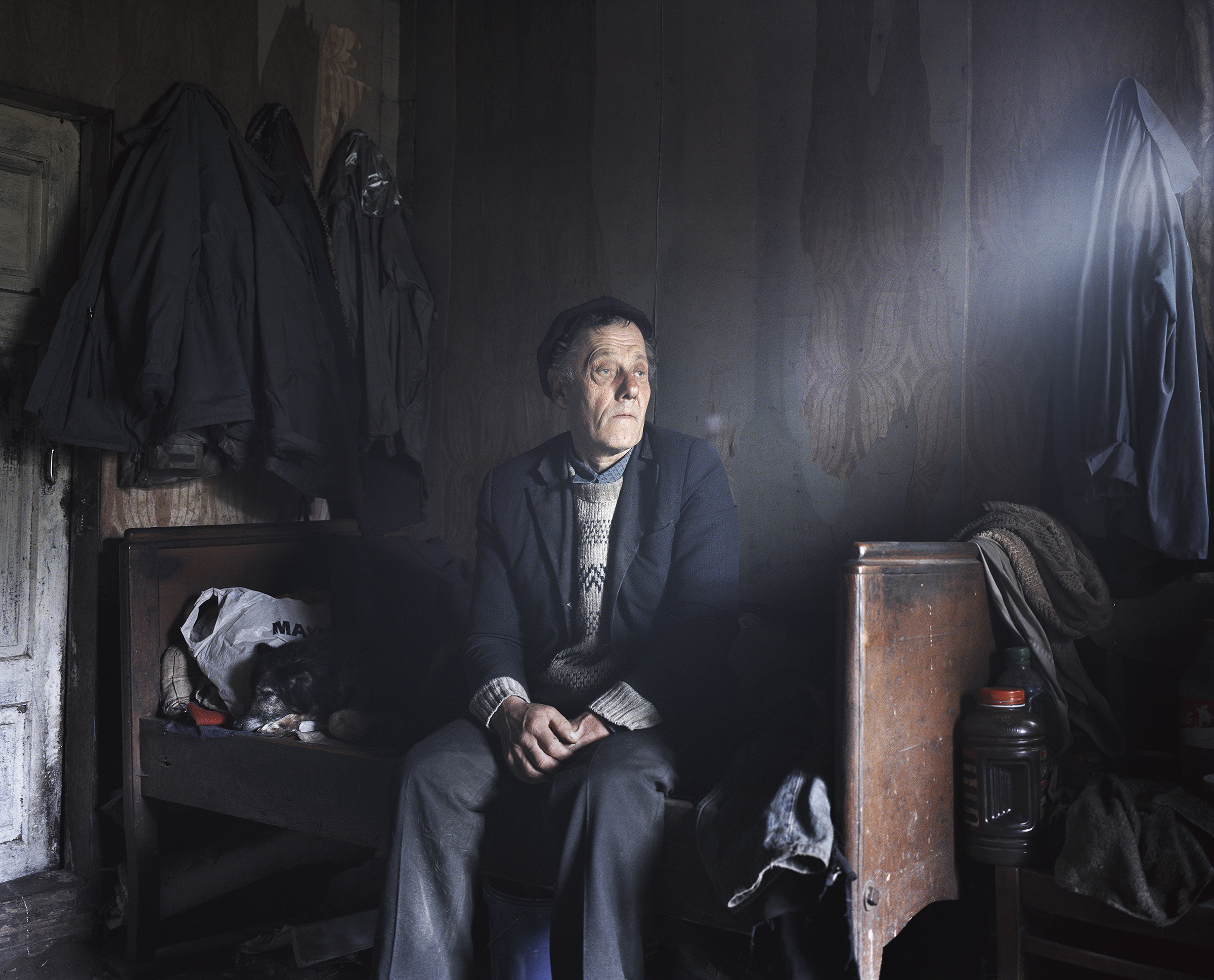
Gandras: Land of the White Stork is a beautiful book. By saying this, however, I do not mean to say it is pretty, although many of the images certainly are. This book is beautiful in the way that love is much larger than allure. I cannot explain why, but what we call beautiful always has an element of loss hiding somewhere inside it. An image of a beautiful child is beautiful, in a small way, because we know that child will age. The beautiful, as an idea, always involves a sense of loss or nostalgia.
Gandras: Land of the White Stork book begins with an image on its cover, what I suppose is a farmhouse, worn and in decay. Its shutters are closed. Its picket fence is faded, tilted and broken. The property is enclosed by a chain link fence that’s topped by barbed wire. The tree next to the house is dead, or at least not in bloom.
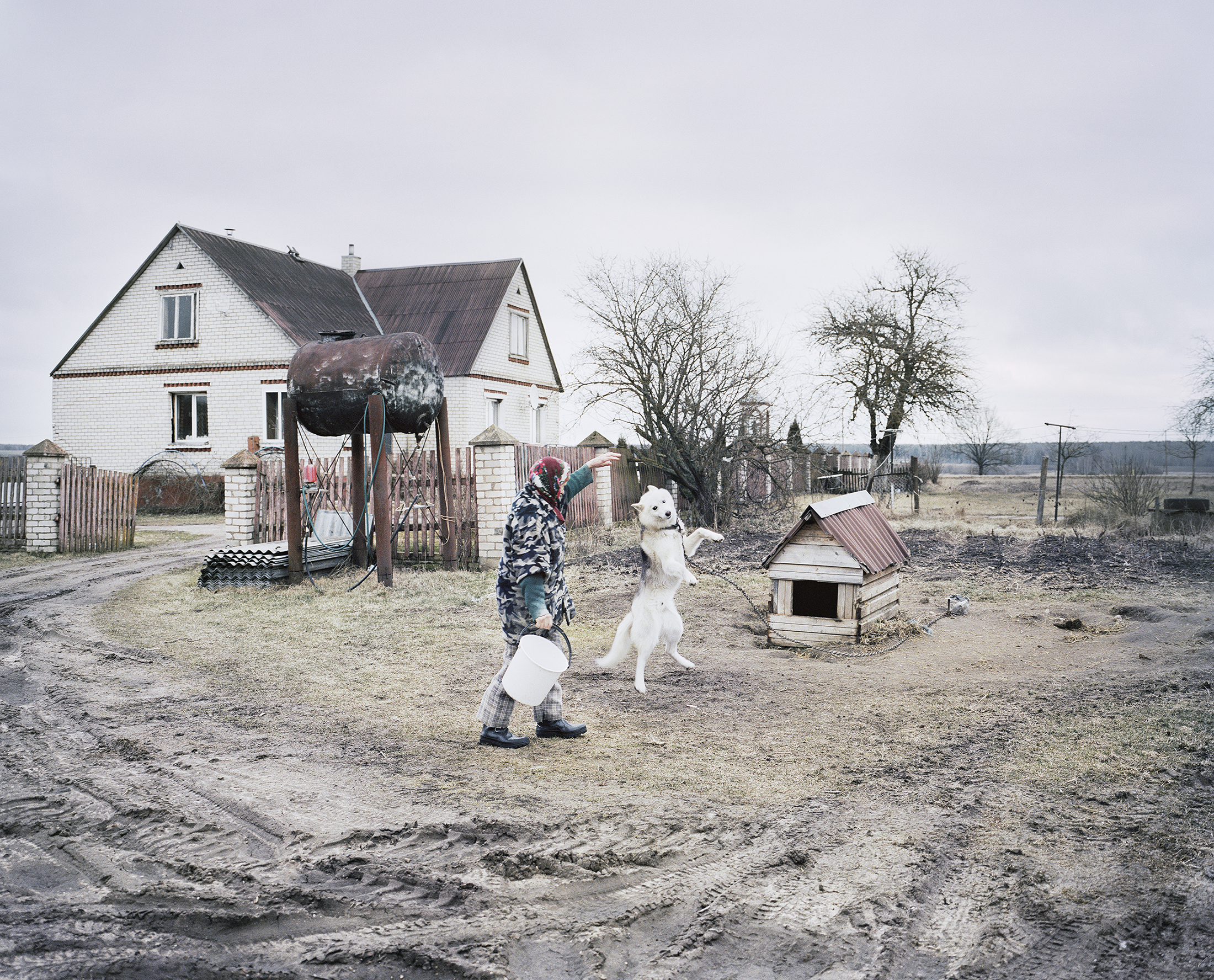
But that might be exactly the point. If this is a winter shot, then spring is on the way. There is memory and sadness in this image. But if you look hard enough, there is the possibility of hope. There is no doubt the house was once lovely.
Gandras is the Lithuanian word for Stork. Much more than a cartoon bird carrying an infant in blankets held in its beak, the stork is an ancient symbol of fertility and new birth. Storks return to Europe every spring. Greeks and Egyptians and the Norse all saw the stork as a sign of starting over, of reinvention, of family strength and hope.
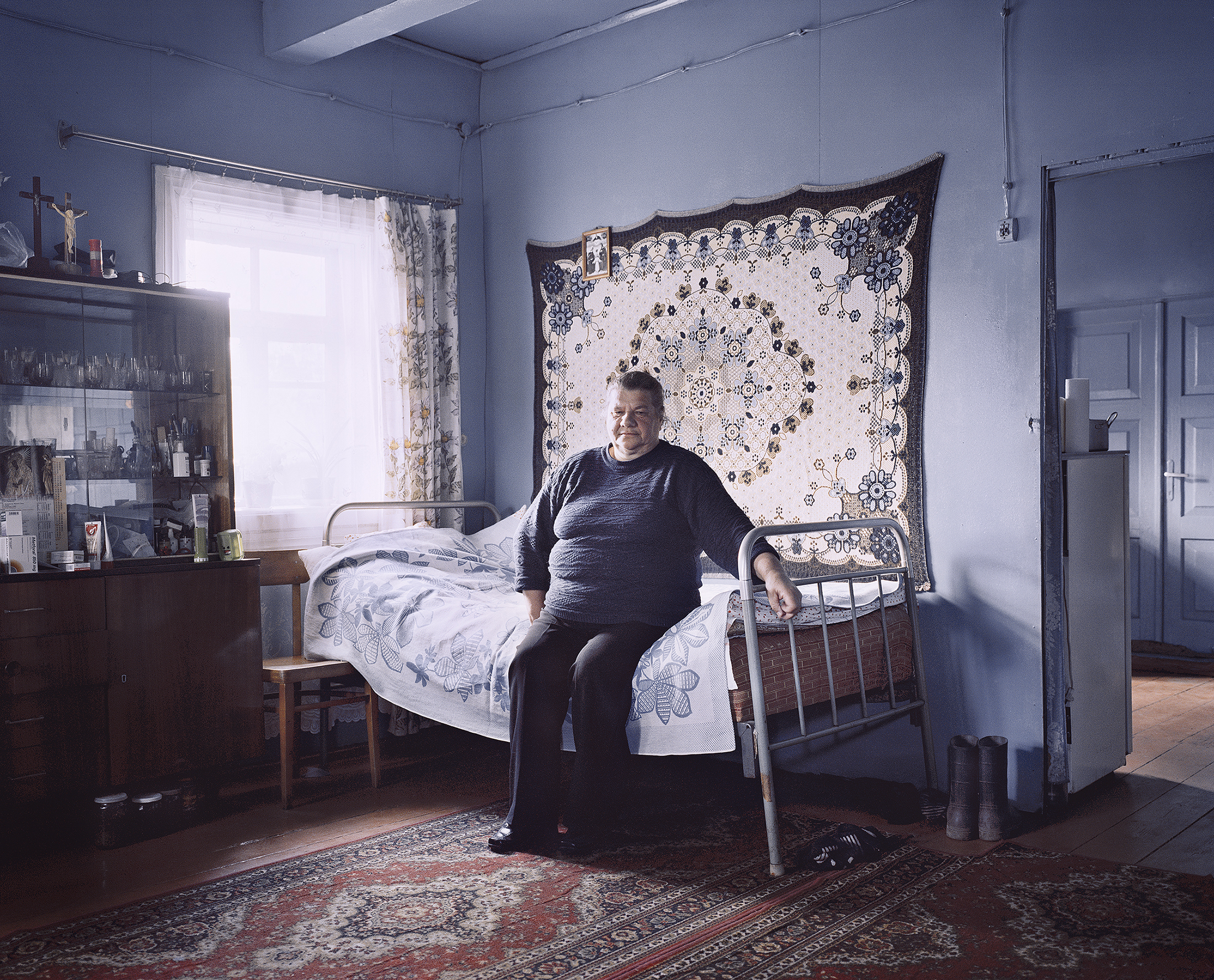
The images inside this book are immediately recognizable as Eastern Europe, which we know is suffering horribly. To give the book a title that implies hope provides even a first viewing a sense of nostalgia and promise. There are images of barren trees, of muddy roads, of pretty flowers in a vase on a table next to a crucifix. There are images of men and women who look tired and remorseful. There are images of thin snow over fields and streams and hills. Despite the hardship in every image, however, there is in every image also at least one element of hope.
Interspersed throughout the book are images of old printed pictures, frayed at the edges and losing their color. These images are not side notes. They are essential. I look at them the way I would, now in my mid-60s, look at pictures from my grade school. Memory and an awareness of time hang heavy in the air. The old images in this book provide a sense of what used to be, of what joy has been lost. One image is of a party, people playing the violin and accordion, others dancing. Another image is apparently a group of classmates. They are the world we have the impossible hope to reclaim.
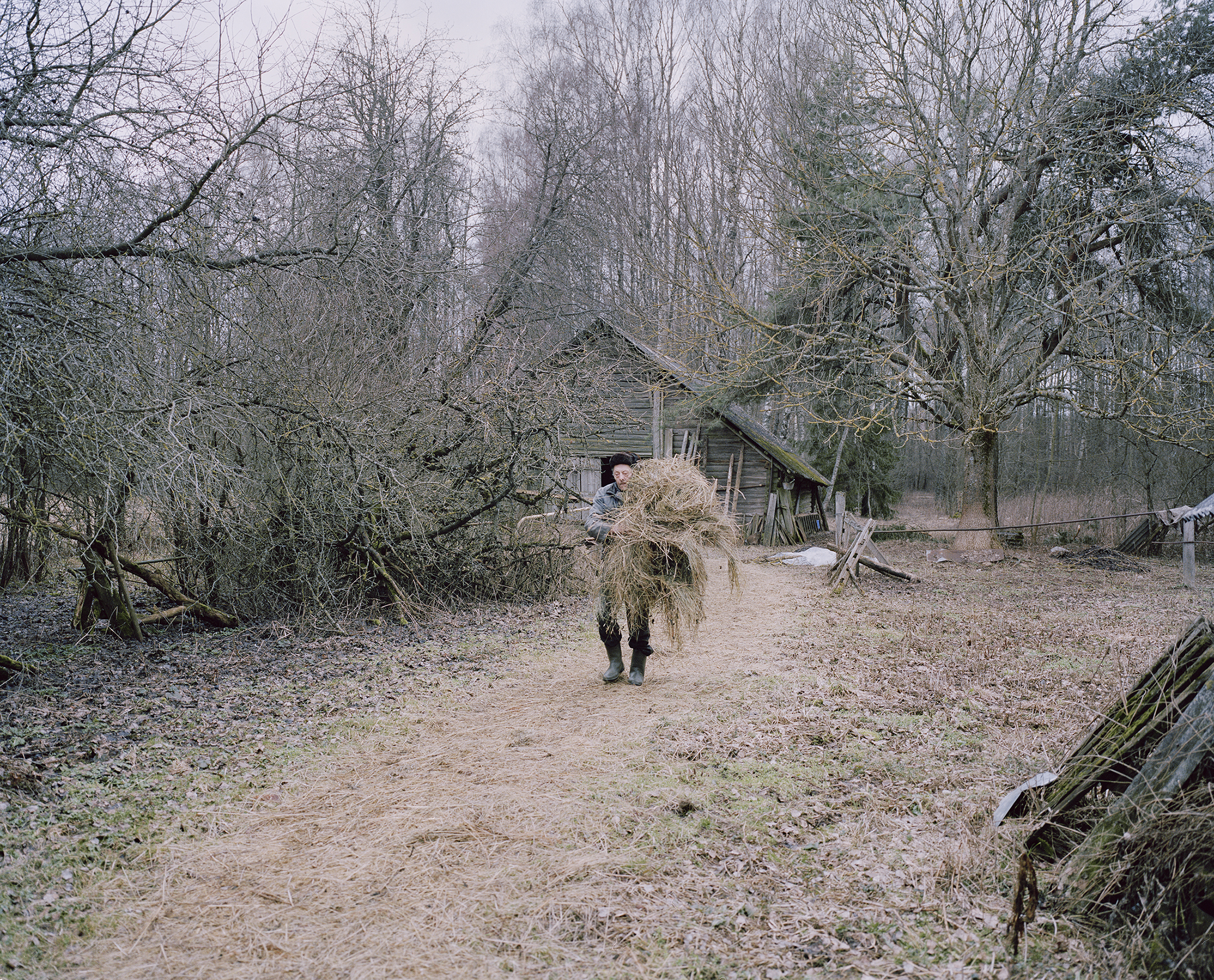
The majority of the images in this book are contemporary. There are landscape shots and portraits and images of old men and woman working a rural landscape, living in homes not too far away from being abandoned.
Turning the pages of this book is not the unfolding of a narrative arc as much as it is kind of growing concentric circle, much like the musical scores that repeat the same theme but add instrumentation. Every page becomes a fuller understanding of this region. The interplay between the old photographs and the new develops a melancholy chord.
Gandras: Land of the White Stork begins with a single line of text, an excerpt from “The Border: A Double Sonnet” by Alberto Rios. It reads, “The Border is a line that birds cannot see.” This becomes poignant at the back of the book, after the beauty and the wondering and subtle but very real presence of nostalgia and hope and regret, with a bit of text. A part of me wishes it was up front, at the beginning of the book, to inform and direct my viewing. Another part of me, though, is glad it almost hides at the back. It recasts what I have imagined into something more complex, more gut-punching sad, more impressed with the character of a place and people I will likely never meet.
It reads,
“the border between Belarus and Lithuania, two countries previously part of the Soviet Union, was once little more than an insignificant, thin line on a map. The people of this area interacted freely with one another, moving from one country to another. The bonds of their communal life were strong despite their national diversity. Families often intermarried, creating a common social identity. With the collapse of the Soviet Union in 1991 and the erection of the European external border between Lithuania and Belarus in 2004, many of these border towns were divided. This territorial re-alignment not only separated countries, it also disrupted the once harmonious lives of the people who live there. Many families were torn apart. Trees were cut down and replaced by barbed wire fences. Spouses, siblings, and close friends now live an entire word away, although their houses are only a few meters on the other side of the border. Those who remain in the towns along the Lithuanian border are now, for the most part, secluded and forgotten.”

I happen to know the Rios poem, and there are other lines, not included in Gandras: Land of the White Stork, which also get to the heart of these images.
The border says stop to the wind, but the wind speaks another language, and keeps going.
The border used to be an actual place, but now, it is the act of a thousand imaginations.
The border is a place of plans constantly broken and repaired and broken.
The poem, like the book, is moving and eloquent.
Gandras: Land of the White Stork is a quiet and powerful book. The images each find that resonant sense of detail that creates something huge. The ordering of the images, and the interplay between the old and new, makes this book one that will linger in your emotions and ideas of loss and hope.
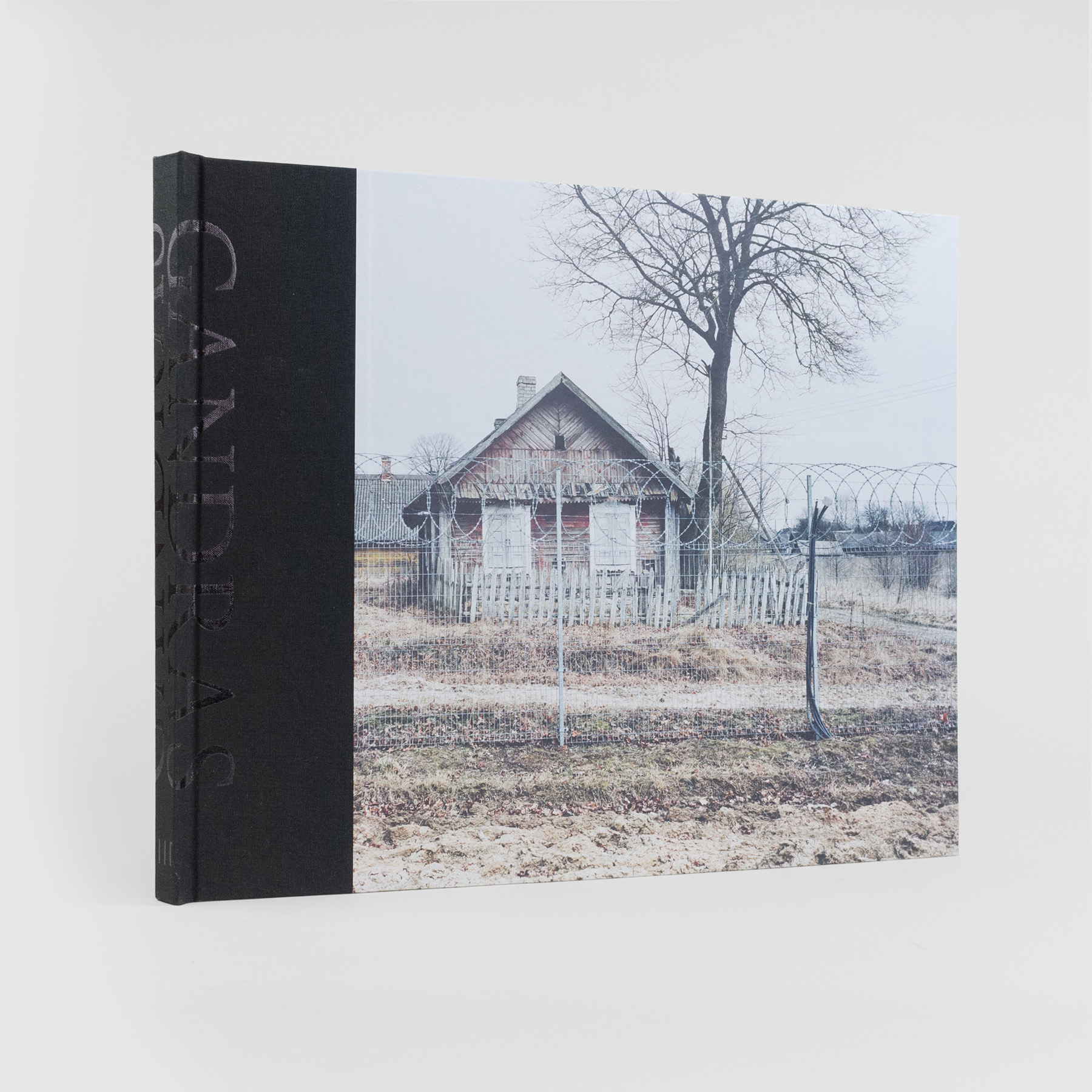
A note from FRAMES: if you have a forthcoming or recently published book of photography, please let us know.

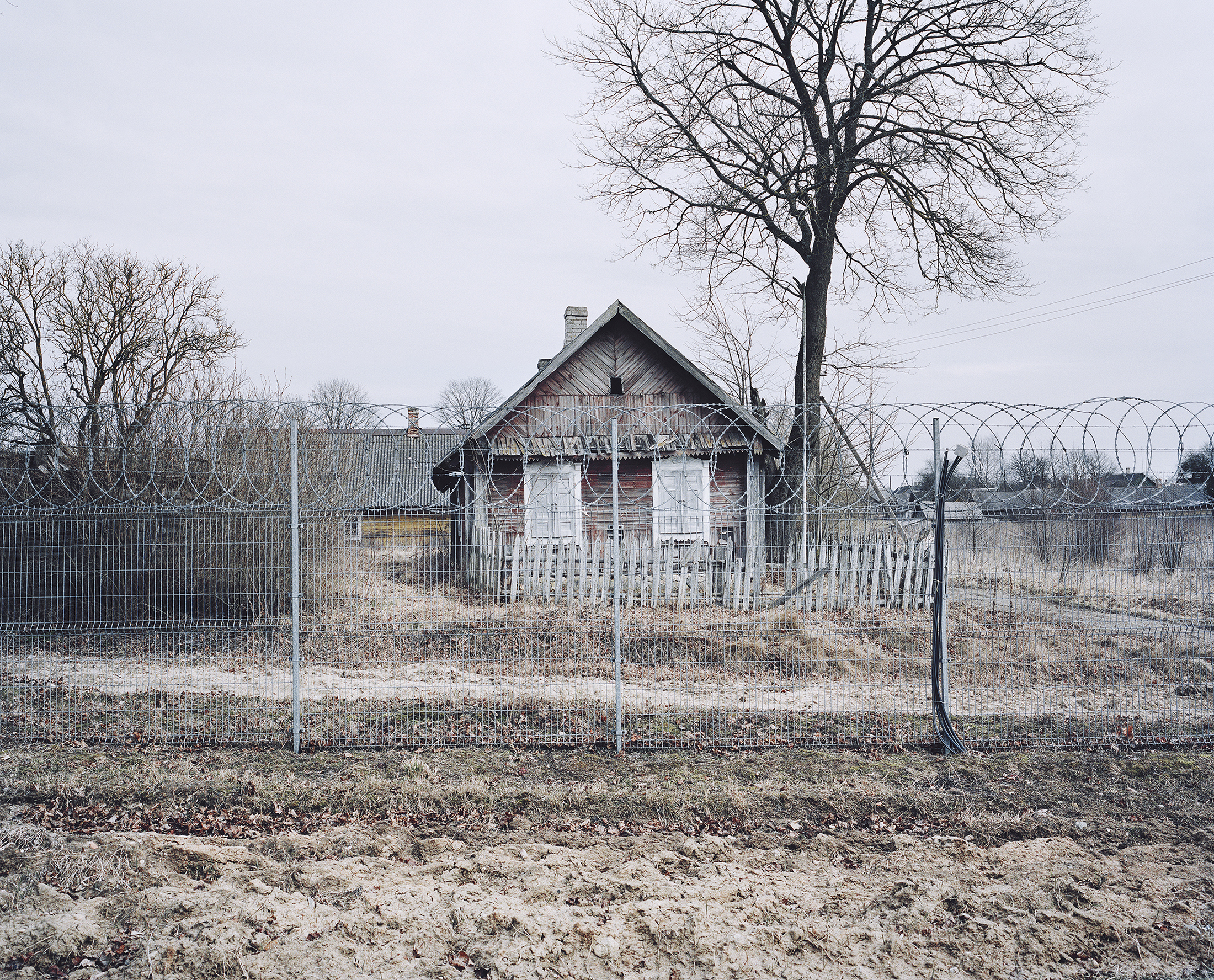



Tracy Poulsom
June 10, 2023 at 12:06
Absolutely stunning looking book and such an engaging post written. I will so add the purchase of this book to my wish list.